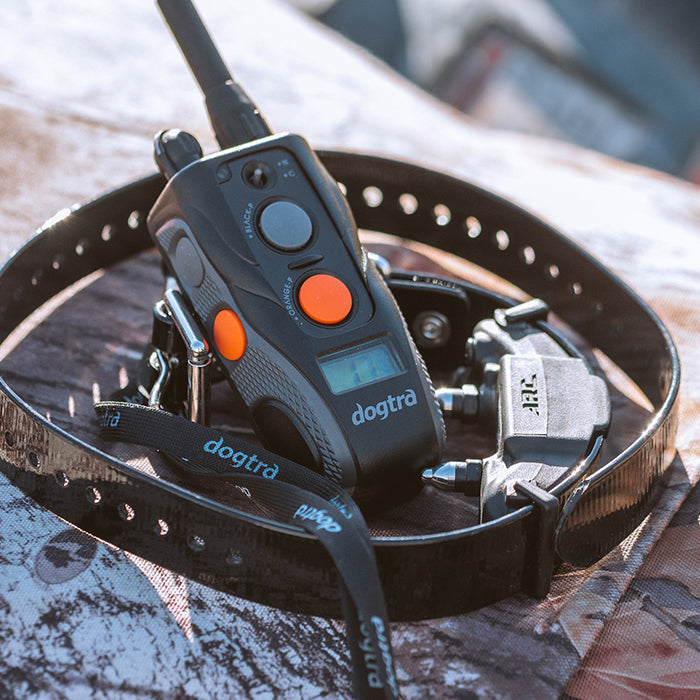STATIC DOG COLLARS: RECOGNIZING CONFUSION & FINDING SOLUTIONS

Have you ever found yourself frustrated with your dog's lack of response when using an e-collar during training? It's common for our furry friends to feel confused and unsure when using this training tool. Recognizing these moments of confusion and knowing how to address them is essential in creating a successful and positive training experience for both you and your dog. In this article, we'll explore some common signs of confusion in dogs when using a static dog collar and provide tips on how to help your pup overcome this confusion for better training outcomes. Let's get started!
How to Understand if Your Dog is Confused About Static Stimulation
Let me paint a picture: you are out on a hike with your dog and ask them to recall to you. Your dog is on a static dog collar, and you are around their average working level. Recall is a skill you have practiced some, and your pup has been mostly successful in low-distraction environments. You call your dog, and your pup lifts their head, glances back at their collar, and then scoots forward (away from you) another 10 feet. You start to increase the level and repeat your recall command. Fido stops sniffing the ground, lets out a big yawn, sits, and begins to scratch at the unit.

What do you think? Is your dog being difficult and not listening? Are they being a jerk and blowing you off?
No! All of the above descriptions depict a dog who is confused and needs a helping hand.
Reading your dog while utilizing a remote training collar is a skill that must be obtained so that we can be most fair to our dogs. Here are some indicators that your dog might not fully understand how to respond to e-collar stimulation or that the level you are using is too high or potentially too low:
- Offering other behaviors (sitting down or laying down)
- Moving away from you
- Scratching at the collar
- Lip licking
- Yawning
- Sharp glances back towards the e-collar
What to Do if Your Dog Doesn’t Respond to E-Collar Static Stimulation
During these moments of confusion, it is important to take a step back and help your dog out. There are many reasons why dogs don’t respond to static stimulation. Whether you're using the collar for training or day-to-day life, it's important to know what steps you can take to help your dog become more comfortable with the tool. In this paragraph, we'll discuss actionable tips for helping your dog overcome confusion and respond positively to the use of an e-collar.
Use the Training Tools
Utilize your training tools, such as the leash, to guide your dog/assist or with verbal cues to get your dog on the right track. If it is safe to do so, continue using stimulation while you offer assistance. Then release at the stimulation the moment your dog commits to the correct command/behavior. If your dog is actively moving away from the stimulation, STOP using it and attempt to recall without the use of e-collar stimulation.
Consider the Environment Around Your Dog
Always keep in mind that the environment in which you are training plays a big role in how your dog will react to e-collar stimulation. If your dog is still new to using a remote training collar, it is best to drag a long leash/rope. That way, it is easy to assist them in making the correct choice when stimulation is applied. Even if your dog is successful off-leash in your backyard, it does not mean they will be instantly successful when you hit the wide-open spaces.
Remember About Cortisol Levels
Another factor that professional trainers and veterinarians have found can be increased Cortisol levels in your dog during training.
- Cortisol is a hormone that can be released when dogs are being trained and working.
- The amount of Cortisol produced and how it performs varies from day to day.
- As a dog's Cortisol level surges, a natural resilience to levels of static stimulation from the e-collar will happen. So a level that attained a response one second may not get any reaction seconds later.
Final Thoughts
It is normal for your dog to be confused when distraction levels change. Being able to see the confusion and help your pup will greatly assist you in your goal of having an off-leash reliable dog. In the meantime, continue to practice the behaviors in low to medium-distraction environments to ensure your dog is able to generalize the behavior you are asking for. It can be a slow process, but working through confusion will pay off immensely! Check out www.dogtra.com for more guidance.




